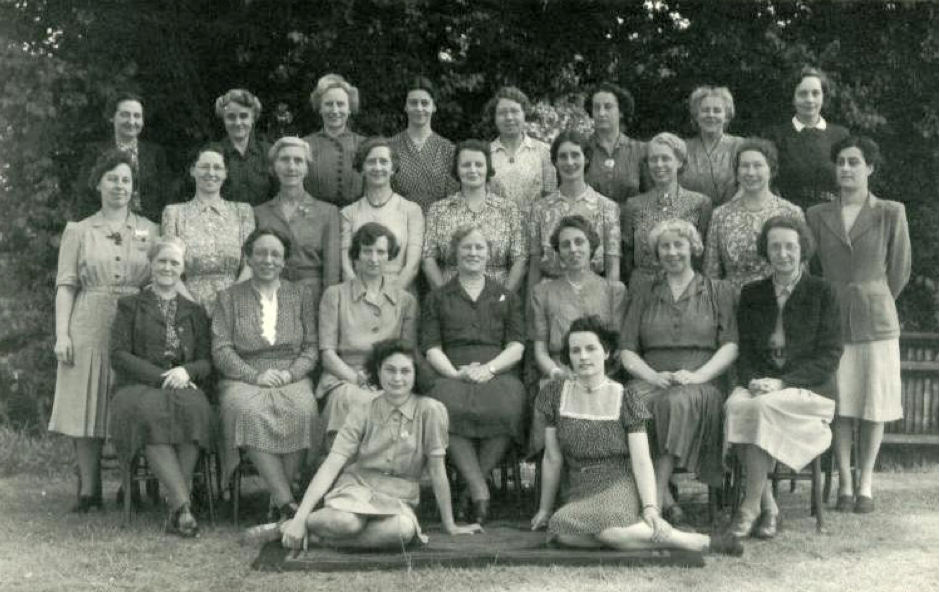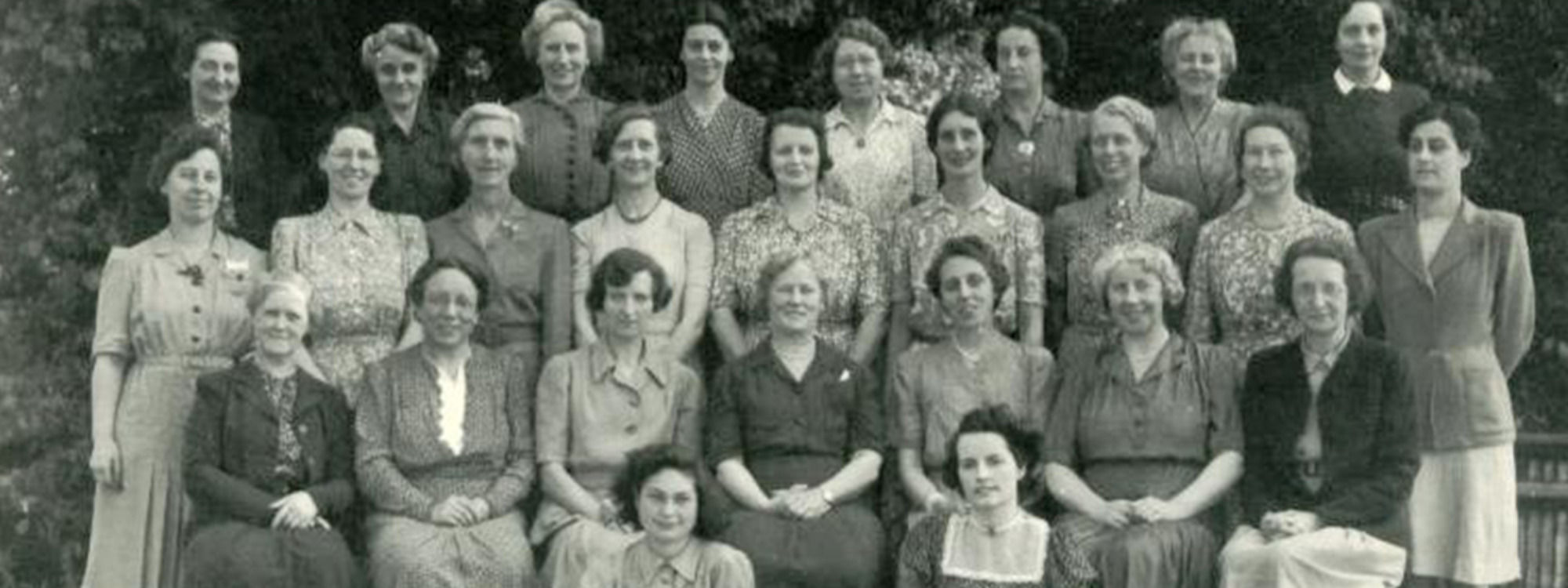1939 - 1945
The declaration of war on 3rd September 1939 was to start a new era in the history of Eltham Hill. For a week before the official declaration, the school had been preparing for the evacuation of pupils and staff. They had to be ready for departure at a moment’s notice. Every girl had brought a rucksack packed with a minimum of necessities, which were examined by staff for adequacy and suitability. They would be leaving from the station with other local schools and practised for the purpose a special road drill known as ‘waving’. This involved a hundred girls at a time crossing the road by all stepping off the pavement at once in a long line.

First Form 1939 – The teacher is Miss Kennedy.
Finally on Friday 1st September, Miss Ozanne received orders for evacuation from County Hall and the school left Well Hall station for an unknown destination. The girls had no idea whether they would ever see their families again. The first destination was Deal but there was no suitable school accommodation available. A fortnight later they moved to Folkestone where they were to share the building of the Girls’ County School. For a time they were taught in a variety of small halls in the town but eventually a building was allocated for the school’s use. All the furniture was sent from Eltham – desks, chairs, cupboards, laboratory equipment, even library shelves and books. A residential hostel was set up, staff painted bedsteads in cheerful colours and began growing vegetables in the grounds. By the Spring of 1940, despite a bitter winter, girls were forgetting their homesickness, and looking forward to a summer by the sea. But in May 1940, the German Army invaded Holland and once again Eltham Hill was on the move.

September 1939 – the final assembly before evacuation. If you look carefully you can see the backs of three boys at the bottom of the photo. These boys were younger brothers who were evacuated with their Eltham Hill sisters.

September 1st 1939 – boarding the evacuation train at Eltham Well Hall Station
They left Folkestone by special train, again for an unknown destination, and finally arrived at Abertillery in South Wales. Here they received a welcome, which amazed and delighted them. The streets were filled with crowds who immediately took her bags from anyone who looked weary and commented at their sad fate in being separated from their parents. They were then entertained to a feast at the local church with speeches of welcome from various town dignitaries.
Girls and staff quickly settled into their new homes with local families and resumed the routines of school life. They had the use of the building belonging to the local grammar school for part of each day and spent the remainder in rooms above a local department store. These were equipped with the now widely travelled Eltham Hill furniture. Examination successes continued including outstanding results for two pupils in the university scholarship exams in 1941. However the school became very much smaller as many girls moved with their own families to other parts of the country and very few new first years joined the school. Indeed at one point the second year consisted of only ten pupils. As a result, some teachers were recalled to fill temporary vacancies in Emergency Schools in London. The school remained in Abertillery for three years. It was a very happy time for all those who experienced it and a social awakening for many girls. They saw coalmines, factories and industrial plants in action but at the same time were able to enjoy the countryside and beautiful mountain scenery.

Staff at Abertillery in 1941
By 1943, it had become obvious that with so few pupils it was no longer possible for the school to remain open in Wales and the decision was taken to return to Eltham. This was a time of mixed emotions as many girls had made life-long friends in Abertillery, especially with their host families, but all were pleased to be returning home.
The Eltham Hill building had been taken over since 1940 as a Rest Centre for bombed-out families. The WAAF occupied the studio, there were Nissan huts and dugouts in the grounds and the field was the site of a barrage balloon.
In the Autumn of 1943 the school finally re-opened in Eltham having regained the use of the first floor, the Hall and the gymnasium. Only the Upper and Lower Sixth were able to remember pre-war school days but so many of the staff has remained with the school throughout the evacuations that the old traditions were soon re-established. It was at thus time that “The Ballad of London River” was adopted as the school song. It had served as a reminder of home for so many scattered children.
Despite the return, the war was not yet over. Eltham continued to suffer incendiary bombs and later V1 and V2 rockets. Staff had to take their turns at fire watching, sleeping in bunks in the building, ready to deal with incendiary bombs. The school building itself escaped damage but School Certificate candidates had to take shelter under tables more than once while actually sitting their examinations.

